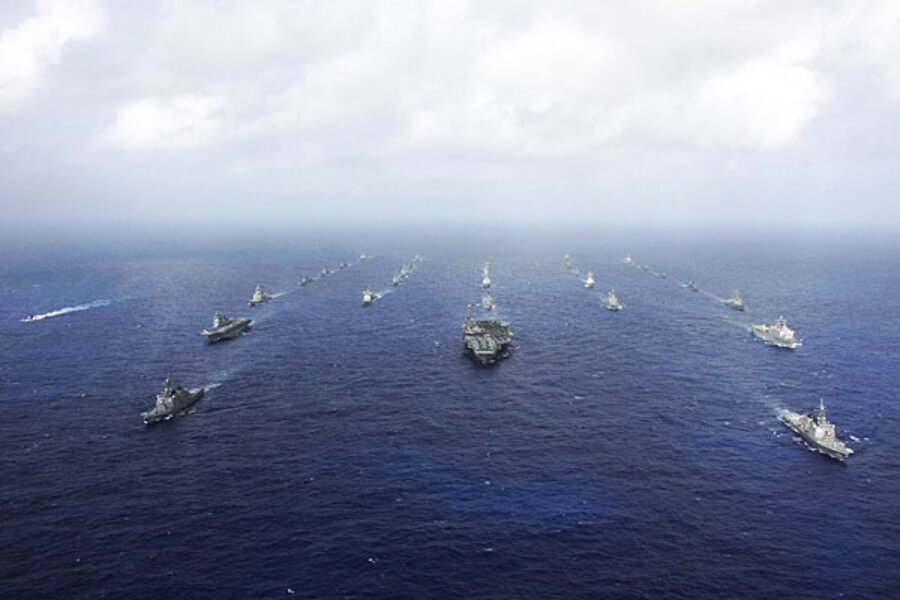It is the year 2013, and “what experts are calling the greatest aggregation of naval power the world has ever seen is assembling in a long arc several hundred miles off the maritime approaches to China.” The leaders of the United States and Japan are debating what to do next “in what many fear may be the opening gambits in a new world war.”
The People’s Liberation Army is blockading Taiwan – and diplomats know that a blockade is an act of war. That’s why they are calling it a “quarantine,” and US allies, including Japan, are contemplating a retaliatory “counterquarantine” against Chinese ports.
Defense analysts conclude that a series of internal crises in China has brought the world’s great naval powers to the cusp of war. China’s economic growth has slowed dramatically. This has worried Chinese leadership, which “needs a rapidly growing economy to ensure its legitimacy,” according to the scenario, also drawn from "7 Deadly Scenarios" by Mr. Krepinevich, who now is the executive director of the Center for Strategic and Budgetary Assessments.
At the same time, China’s young male population is rising, the result of China’s one-child policy and widespread selective abortions that favor male offspring.
Now girls are at a premium, leaving many young men unmarried and suffering “from low self-esteem, and feel[ing] alienated from (and rejected by) ‘mainstream’ society. Some scholars, studying the consequences of historical cases of profound sex-ratio imbalances, argue that this situation may set the stage for high levels of internal stability,” the scenario warns.
"They also ominously note that at times governments faced with this prospect have attempted to redirect that frustration against external rivals.”
A succession of US administrations, “distracted by the Long War with radical Islamist states and groups, and enjoying the short-term economic benefits of trade with China, failed to take the growing Chinese military machine seriously.” Yet “for those who looked closely, the warning signs have been there.”
China has pursued cyberwarfare “to introduce a wide range of viruses, worms, Trojan horses, and other cyber ‘weapons’ into the information grids” of the United States, especially US military computer networks. China has also expanded its fleet of submarines specially equipped to “cut undersea fiber-optic cables that provide data links both to US military forces and to the civilian economy.”
Then, in quick succession, America suffers two major cyberstrikes. One penetrates the Pentagon’s major link to troop supply lines. The other hits the New York Stock Exchange, resulting “in a termination of trading for nearly two days.” Now Pentagon planners must decide how to respond.





